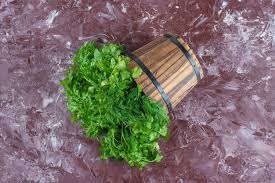Koriandri, known globally as coriander or cilantro, is a vibrant herb that brings a burst of freshness to countless cuisines. Its appeal lies not only in its distinct aroma but also in its dual nature — the leaves serve as a flavorful herb, while the seeds transform into a warm, nutty spice. This versatility makes Koriandri a cornerstone of both traditional and contemporary cooking. columbusperfecttintoh.com
Across continents, Koriandri has earned a beloved place in kitchens for its ability to elevate dishes with a refreshing, citrusy note balanced by earthy undertones. From zesty Mexican salsas to rich Indian curries, its adaptable flavor harmonizes beautifully with spices, vegetables, and proteins alike. columbusperfecttintoh.com
Yet, beyond its culinary charm, Koriandri carries centuries of cultural significance and medicinal value. In this article, we will explore the origins, characteristics, culinary roles, and health benefits of this remarkable herb that continues to enchant palates around the world.
What is Koriandri?
Scientifically known as Coriandrum sativum, Koriandri is a member of the Apiaceae family — the same family as parsley, dill, and celery. Every part of the plant, from its delicate leaves to its tiny seeds, offers distinct flavors and applications.
One common confusion surrounds the difference between Koriandri, coriander, and cilantro:
- Koriandri (or coriander) generally refers to the entire plant, including seeds and leaves.
- Cilantro is the term used mainly in North America for the fresh green leaves.
- Coriander often describes the dried seeds used as a spice.
This herb’s versatility is unmatched — the leaves bring brightness to dishes, seeds add warmth to spice blends, roots intensify curries and soups, and even stems contribute aromatic depth to broths and sauces. columbusperfecttintoh.com
A Global Culinary Journey
Koriandri’s global journey is reflected in its wide range of uses in different cuisines:
- Indian Cuisine: In India, koriandri is found in almost every meal. The seeds are ground into spice blends like garam masala, and the leaves add freshness to chutneys, curries, and dals. brentwoodsurgery.com
- Mexican Cuisine: In Mexico, fresh koriandri leaves, called cilantro, add zest to tacos, guacamole, and salsas. brentwoodsurgery.com
- Middle Eastern Cuisine: Ground koriandri seeds are used in stews, meat dishes, and falafel, giving them a rich aroma. brentwoodsurgery.com
- European Cuisine: In Europe, the seeds appear in sausages, breads, and pickles. brentwoodsurgery.com
At home, you can toss fresh koriandri into soups or salads, crush the seeds for marinades, or use it as a garnish on rice and noodles. It’s a simple way to bring depth and freshness to everyday meals. brentwoodsurgery.com
Nutritional Powerhouse
Beyond its flavor, koriandri is loaded with nutrition. It contains vitamins A, C, and K, which are great for immunity, vision, and skin. The plant also offers calcium, potassium, magnesium, and iron. Its antioxidants protect the body from cell damage, while the dietary fiber helps digestion. Adding koriandri regularly to your diet can boost your health naturally. brentwoodsurgery.com
Healing Powers and Health Benefits
Traditional medicine and modern studies agree that koriandri supports overall wellness:
- Improves Digestion: Koriandri seeds are used in herbal teas to relieve indigestion and bloating. brentwoodsurgery.com
- Balances Blood Sugar: It may help control blood sugar levels, making it helpful for people managing diabetes. brentwoodsurgery.com
- Promotes Heart Health: Antioxidants in koriandri can lower cholesterol and improve circulation. brentwoodsurgery.com
- Detoxifies the Body: It helps remove toxins and heavy metals from the body. brentwoodsurgery.com
- Enhances Skin and Hair: The antibacterial properties of koriandri support clearer skin and healthier hair growth. brentwoodsurgery.com
Cultural and Spiritual Role
Koriandri holds more than just culinary importance. In India, it’s part of sacred food offerings and festive dishes. In ancient Mediterranean cultures, it symbolized love and vitality. Its lasting presence across generations shows how deeply it’s tied to both nourishment and spiritual belief. brentwoodsurgery.com
How to Store Koriandri the Right Way
Keeping koriandri fresh depends on how you store it. The leaves should be wrapped in a damp cloth and kept in the refrigerator to maintain their crispness. The seeds stay best in airtight glass jars away from sunlight. If you’re using ground koriandri, use it within a few months, as the flavor fades quickly once the seeds are crushed. brentwoodsurgery.com
Growing Koriandri at Home
Many families grow koriandri at home because it is easy and fun. Even a small pot is enough. Within weeks, you can harvest fresh leaves. Children especially enjoy watching it grow and using it fresh in meals. whitepheasant.co.uk
Conclusion: The World of Koriandri
Koriandri is more than just a plant. It is a connection between culture, history, taste, and health. It grows easily, can be used in many dishes, and has been loved for thousands of years. whitepheasant.co.uk
Whether in cooking, gardening, or history, Koriandri proves how important plants are to human life. Its green leaves and round seeds make it a treasure of nature. whitepheasant.co.uk
Next time you see or taste Koriandri, remember: this plant is not just about flavor – it carries knowledge, culture, and tradition. whitepheasant.co.uk
FAQs About Koriandri
Q1. What is Koriandri?
Koriandri is another name for the coriander plant (Coriandrum sativum). It is used as both a herb (leaves) and a spice (seeds) in cooking. whitepheasant.co.uk
Q2. Why is Koriandri important in food?
Koriandri adds a fresh, lemony flavor to dishes. The leaves are used for garnishing, while the seeds give a warm, spicy taste. whitepheasant.co.uk
Q3. Is Koriandri healthy to eat?
Yes, Koriandri is rich in vitamins and minerals like Vitamin C, Vitamin K, iron, and magnesium. It supports digestion and adds natural nutrition to meals. whitepheasant.co.uk
Q4. Can I grow Koriandri at home?
Absolutely! Koriandri grows well in pots or gardens with sunlight and regular watering. Within a few weeks, fresh leaves can be harvested. whitepheasant.co.uk
Q5. Why do some people say Koriandri tastes like soap?
Some people have special genes that make the fresh leaves of Koriandri taste soapy. For most people, it tastes fresh and delicious

